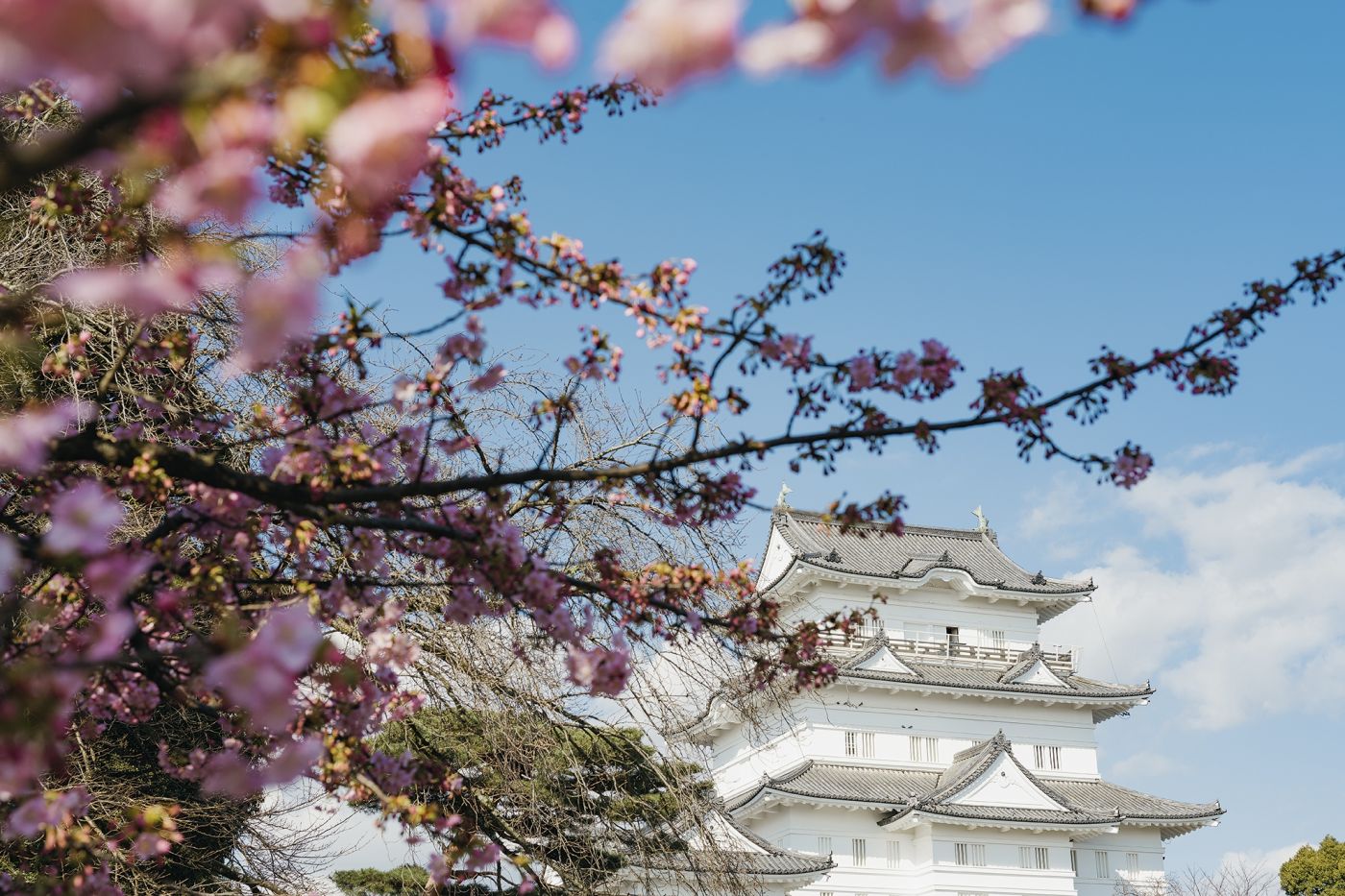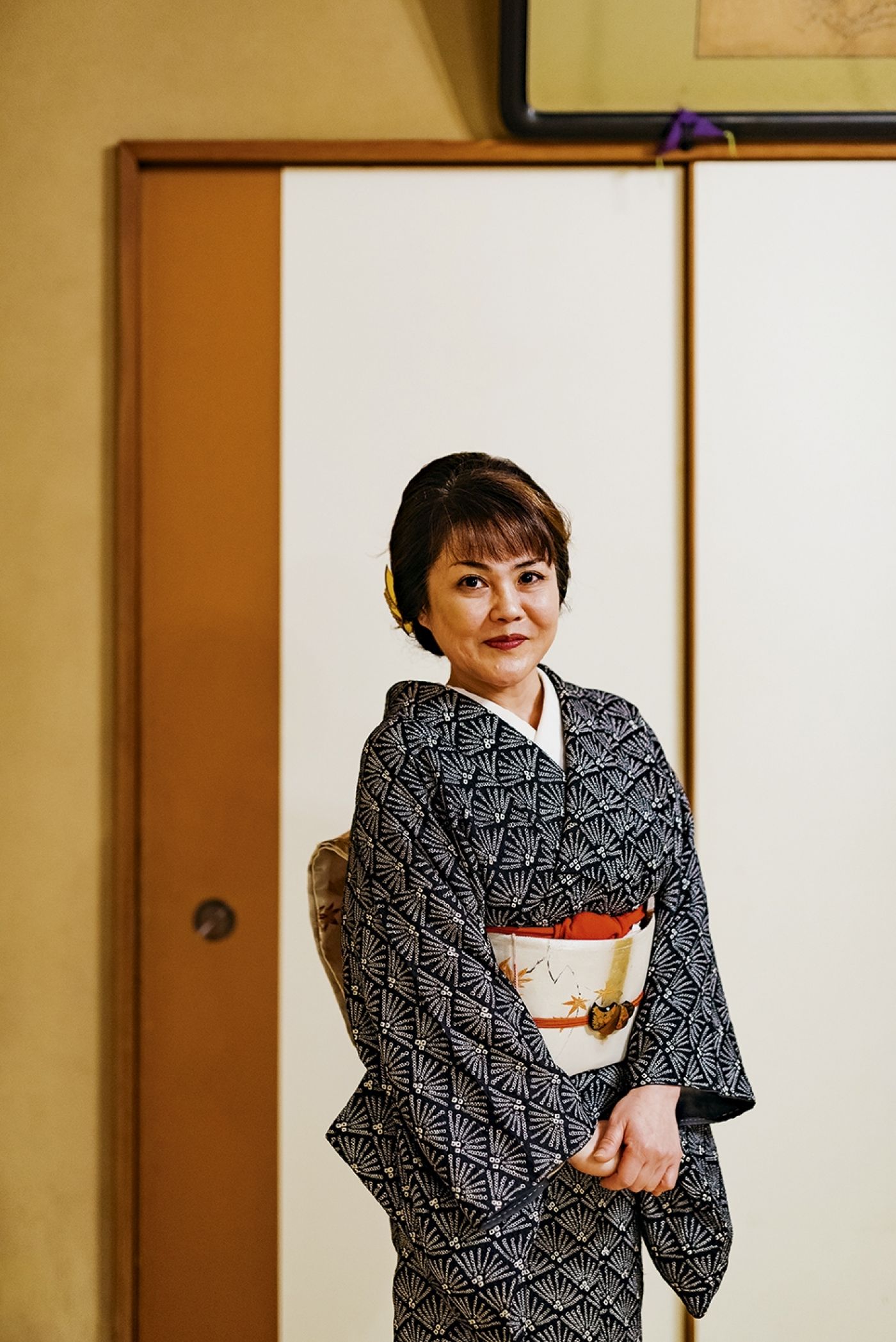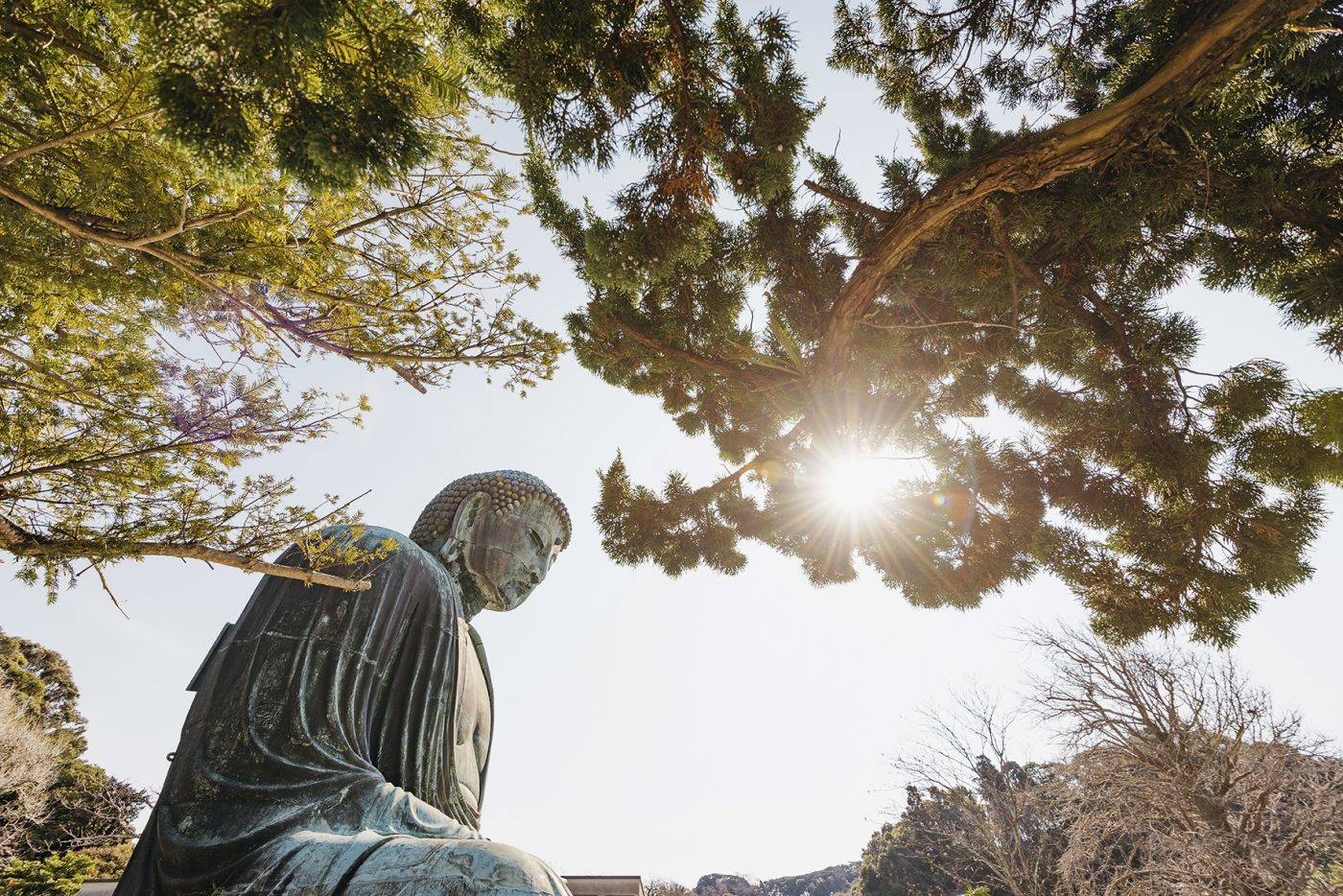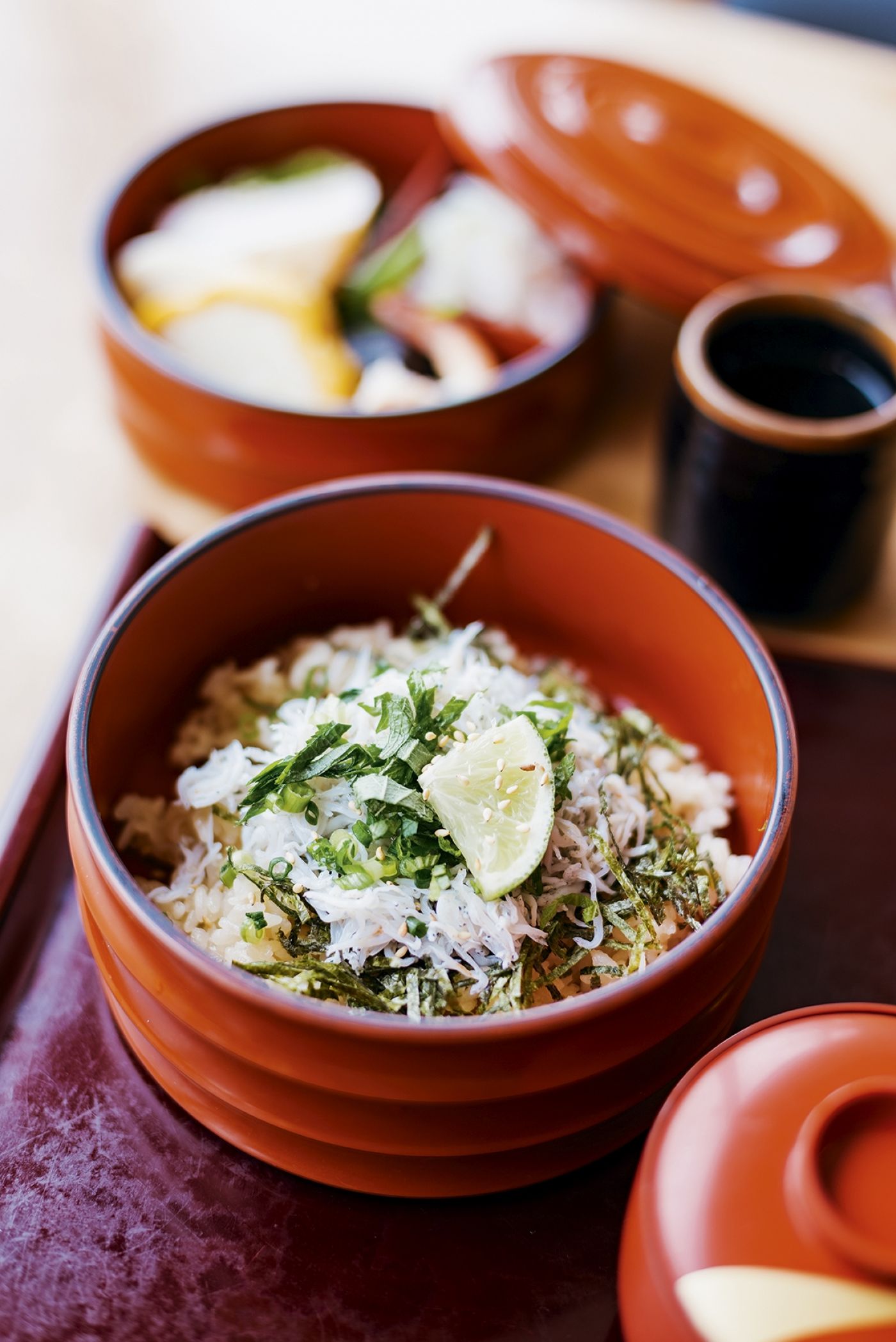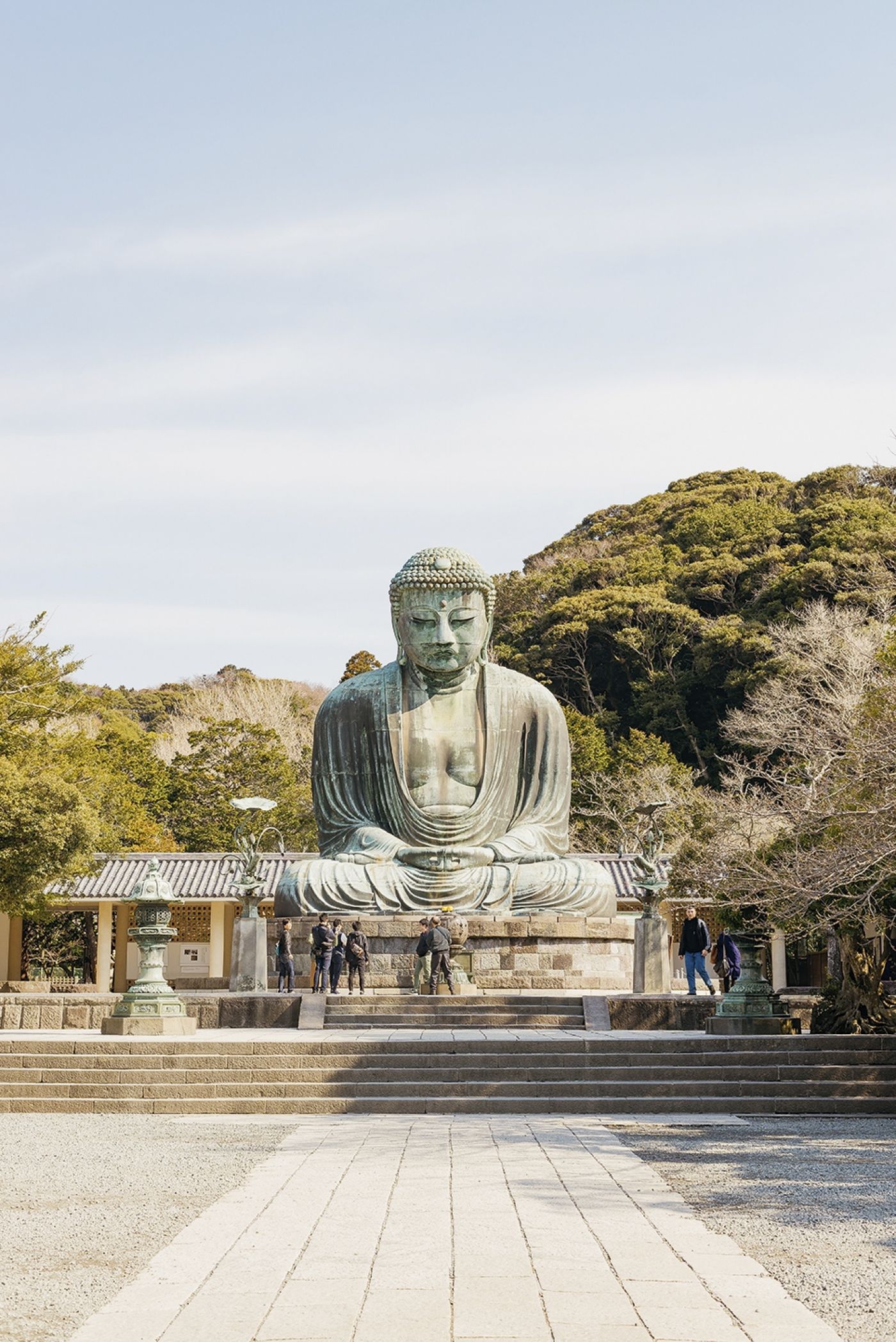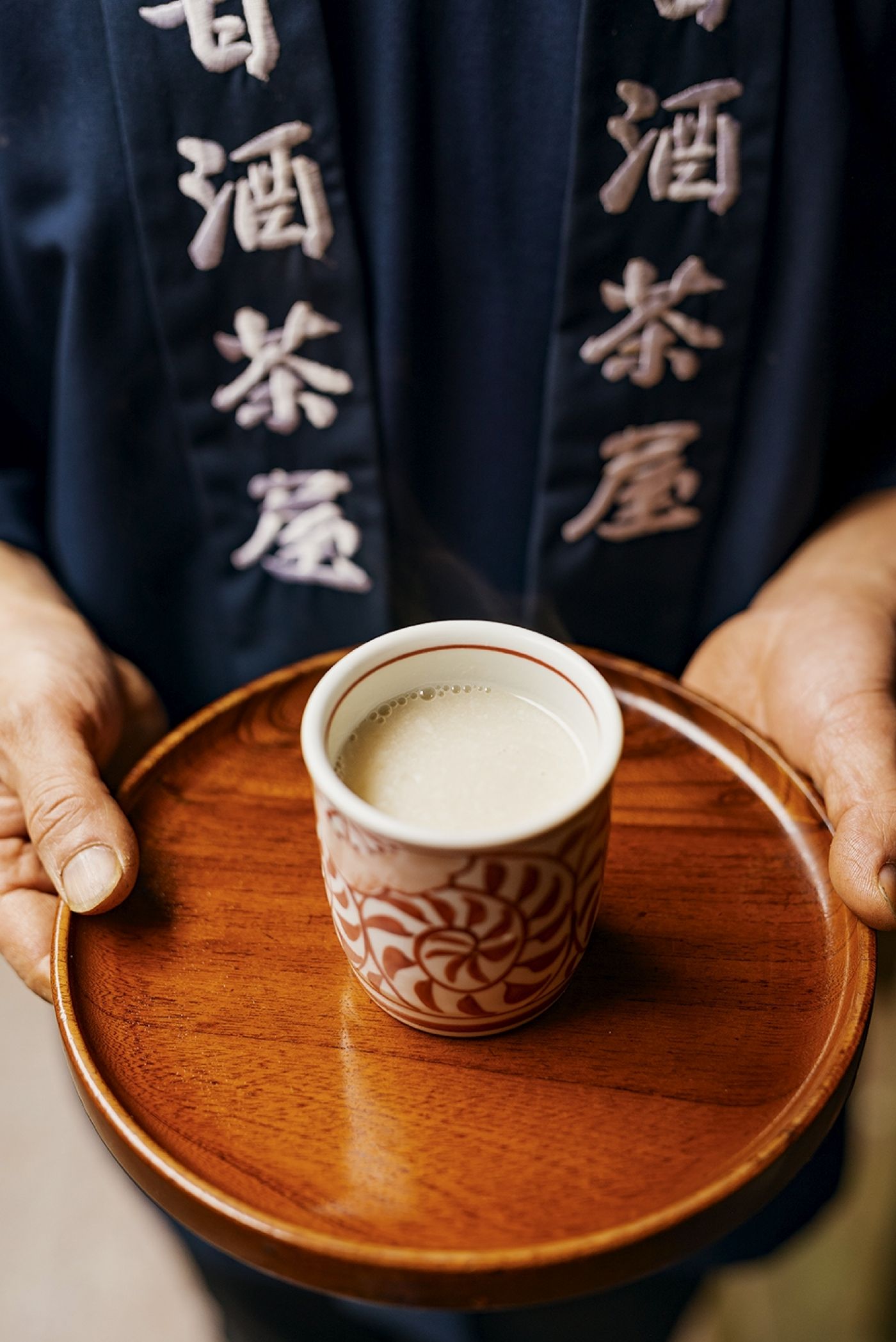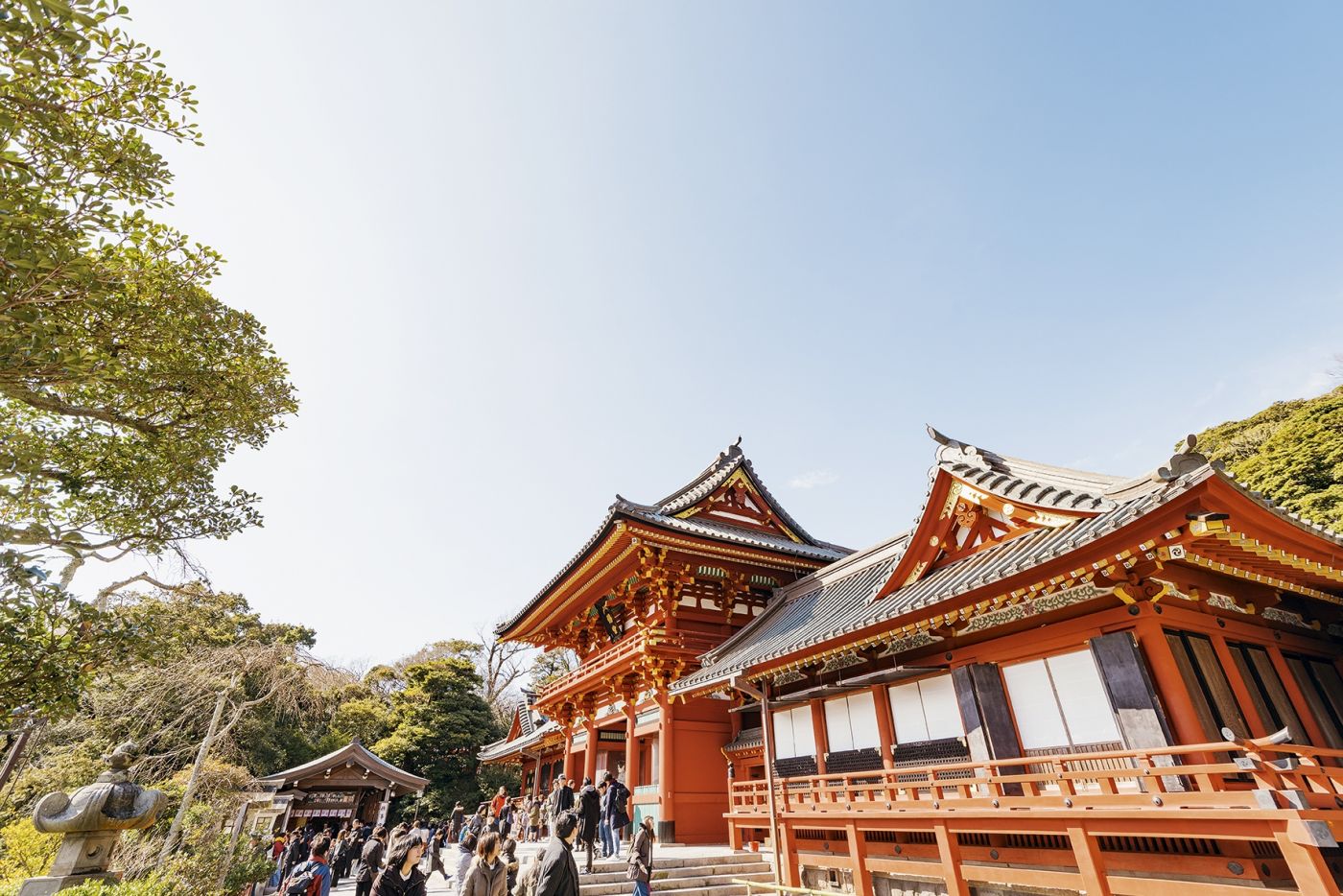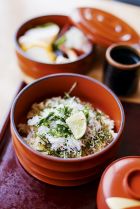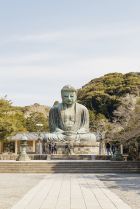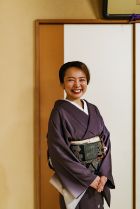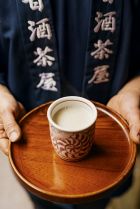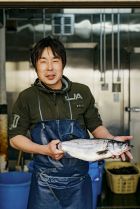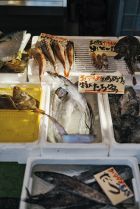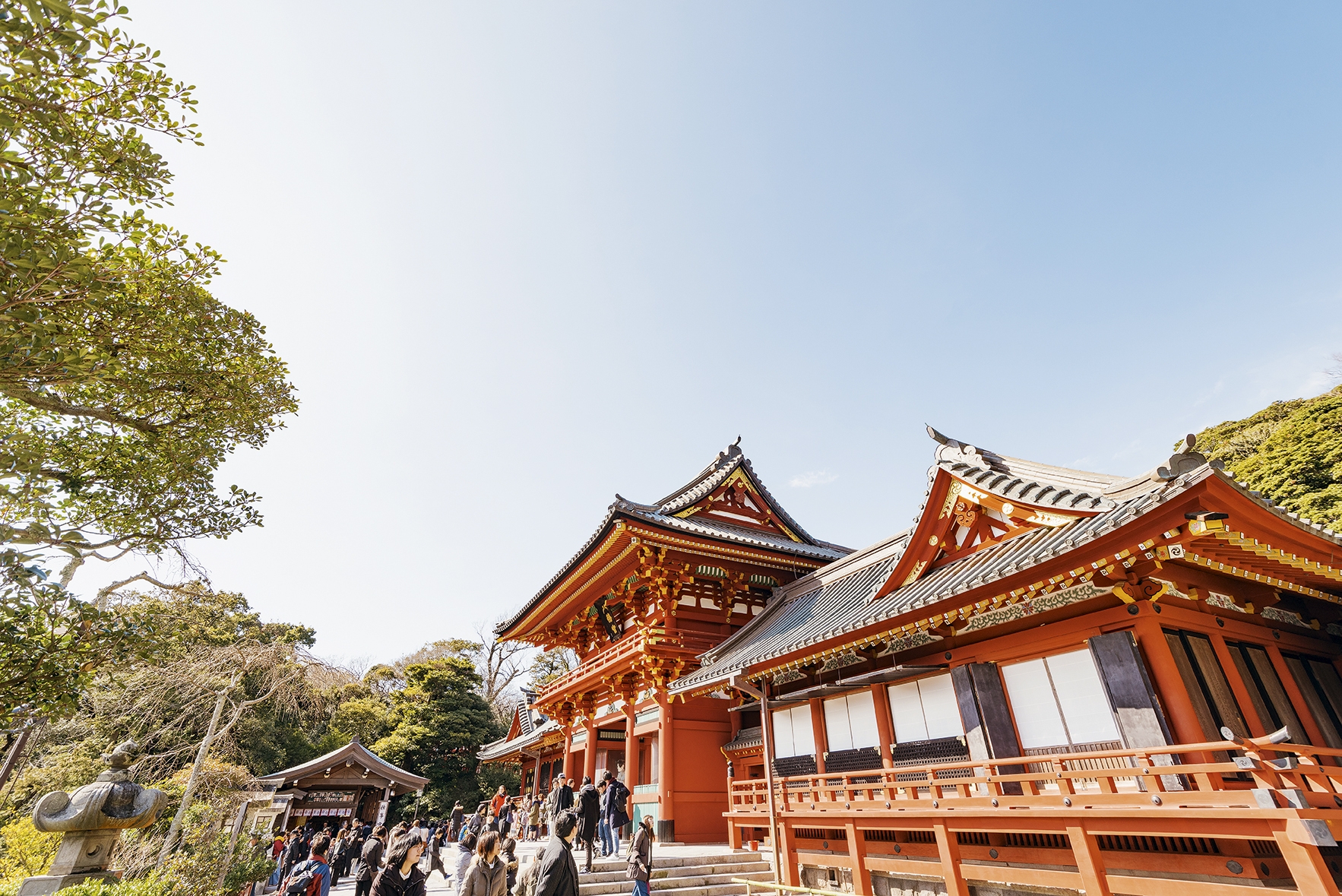
Food and Travel Review
In the foothills of volcanic Mount Hakone, beside an ancient path 97km south-west of Tokyo, Satoshi Yamamoto is serving a cup of amazake in much the same way his ancestors served it to samurai, imperial messengers and travelling salesmen 400 years ago. ‘My family has run this teahouse for 13 generations, through earthquakes and economic troubles and quite a few fires,’ he explains, nodding to the thatched roof of the wooden structure. ‘But we still have the original recipe.’
That unchanged recipe is for Satoshi’s booze-free, fermentedrice brew, renowned for its revitalising properties (rich in B vitamins, amino and folic acids) and for calming colic babies – so perhaps his daily dose of amazake is the reason the 55-year-old is remarkably fresh-faced. Amazake means ‘sweet sake’ but it is not saccharine: the gentle sweetness comes from koji mold, the catalyst behind other iconic Japanese liquors, including saké, of course, but also soy sauce, miso and even some new-wave whiskies. Satoshi prides himself on not taking the taste-boosting shortcut of adding sake lees or sugar. In the same way, he doesn’t cut corners with other century-old recipes at the teahouse, such as chikara-mochi, a pounded-rice cake that’s toasted over charcoal. The isobe or ‘seashore’ variety is wrapped in a nori seaweed sheet and is slippery with a sweet-salty soy sauce reduction.
For 400 years, the teahouse has stood beside the Tokaido, one of the Five Great Highways of old Japan, in the Kanagawa prefecture. Meaning the ‘Eastern Sea Route’, the Tokaido connected emperor and temples in Kyoto with Tokyo, the home of shogun overlords for centuries when it was known as Edo. Today, only sections of the epic 515km pathway remain – one of which is this 8km stretch in the west of Kanagawa.
’Amazake, known for its revitalising properties, was served the same way to samurai, imperial messengers and travelling salesmen 400 years ago. The family who have run the teahouse beside the Tokaido highway for 13 generations still have the original recipe’
Kanagawa has some similarities with Britain’s Hampshire: their south-coast beaches and ports, forested hills and ancient places of worship are reached by train from the metropolis in about 90 minutes. Both are the sites of former capitals, both historic homes to navies. And (perhaps less extraordinary) they both have views of the rising sun. But at the end of the day Kanagawa also enjoys watching the same sun set behind iconic Mount Fuji.
Kanagawa is a little over half the size of Hampshire, but at 1,600m, its Mount Hirugataka is six times taller than the English county’s high point. Its topography is dramatic since Japan sits on the Pacific Ring of Fire – and all that sub-surface geological and volcanic activity manifests itself across the prefecture in its mountain ranges – and occasional eruptions of Mount Hakone – plus a sometimes sawtooth shoreline, and onsen hot springs.
It’s in the hot springs over to the west of Kanagawa, in Mount Hakone’s Owakudani (or ‘Great Boiling’) Valley not so far from the thatched teahouse, that baskets of kuro-tamago black eggs are cooked. These are regular hens’ eggs but they’re so called because sulphur and iron in the hellish water bonds with the shells, turning them the colour of charcoal. Still touted today, an early sales pitch claimed that eating just one of these eggs would add seven years to your life.
After Hakone, it makes sense to head to Odawara, which is the next key stop on the old Tokaido before it steered inland to Tokyo. A seaside city popular with day-trippers for its plum groves (as well as spectacular sakura cherry blossom) and handsome castle, many go home with gift boxes of speciality fishcakes. Known as kamaboko, they are made from a surimi paste – using minced pollock and sardine among other fish – and have a mildly elastic texture, similar to just-cooked gnocchi. The al dente cakes come in various styles: classically steamed and coloured blossom-pink-and-white; deep-fried with burdock root, for example, to make tubular gobou maki, enjoyed in onepot stews such as oden; or combined with sweet yam and grilled on a stick; and there are boiled and roasted versions too. At Odawara’s Yamajou café they blend surimi with egg whites and yolks separately to create two differently-textured blocks which, together, are pleasingly fudgy, similar to a Chinese mooncake.
‘Kanagawa ’s beaches, forested hills and ancient places of worship are quickly reached by train from the metropolis – and you can even watch the sunset behind iconic Mount Fuji ’
Kamaboko fishcakes occasionally find their way into the bowls of restaurants gathered around Odawara’s Hayakawa Port. Alongside the day’s shiniest sashimi, several serve hirakiboshi (butterflied, salted and half-dried fish),grilled with a brush of sticky tare sauce and served with rice for a late breakfast or simple lunch. Pacific saury and scad are everyday dried-fish candidates, and at Tome’s Fish Stand a bottle of Hakone beer (brewed 2km away) goes down well with some freshly deepfried dried fish (try saying that after a second bottle) – the type varies, but look out for shizu (butterfish), which is satisfyingly crisp, salty and swimming in umami.
As this is Japan, sea air-rusted vending machines around the port sell fresh food fast, including cuts of bonito or skipjack, misopickled mackerel and tubs of local shirasu (whitebait).
Clouds of shirasu drift through Kanagawa’s shallow coastal waters and when the sun’s up boats sweep their sock nets around harbours and behind islands to catch crateloads of the immature anchovy, sand lance or round herring. At night, fisherfolk head further out to bring back squid, cutlassfish, bream, sardine and aji (horse mackerel) – a popular hirakiboshi fish.
The production goes unnoticed in Odawara, but along the coast in Misaki, fishmongers dry aji on racks in the sun for around three hours, and the aromas of fresh and drying fish drift through the town’s streets. Koukai Restaurant hangs the bones of alfonsinos (known as kinmedai or ‘goldeneye’) by its front door – the fish loves to eat little prawn, and when later boiled in a dashi stock the dried bones impart a shrimpy richness.
Kanagawa has two distinct coastlines. The first starts in the west, near Odawara’s port, and runs for almost 48km of sandy beaches washed by big surfing waves. That’s Sagami Bay. Then there’s gnarly Miura Peninsula (ankle boot-shaped like a little Italy), where Misaki stands at the mouth of Tokyo Bay, on which the remaining 48km of the prefecture’s shore is occupied by the ports of Yokosuka and then Yokohama, Japan’s second city.
The 20km bus ride down Miura Peninsula’s west coast passes picture-postcard coves, rock-strewn bays and tidy marinas, all the way to Misaki’s harbour, lined with boats that are tough as nails. These are deep-sea vessels that head across the Pacific, down to the Southern Ocean, even around to rich fishing grounds in the Med and the Atlantic off Ireland. They look for tuna and they can go for three or more months at a time, storing the fish at -60C in superfreezers. Yellowfin, bigeye and albacore are all good catches, but the prize is bluefin – a traditional choice for sushi still widely accepted culturally, though many people choose to avoid it due to its declining numbers.
Despite Misaki’s modest size – 40,000 fish eaters, give or take a rare vegan or less rare meatarian, call it home – it is the fifth largest port in Japan by the value of transactions. With its bigeye tuna wholesaling at £12 per kg – and a fish weighing in at an average 80kg – it’s not surprising. A ‘black diamond’ Oma tuna (a Pacific bluefin) can weigh over 400kg, and the belly can fetch upwards of £50 per kg. On a busy day, the tuna auction-hall floor can be lined with hundreds of fish. Local kitchens use every part of the valuable tuna, from the eyeball to the tail, including the kama cheekbone, a delicacy worthy of the classification. At the wholesale market’s cafeteria its lunchtime ‘sashimi set’ starts with slices of chutoro (tuna belly) and crunchy turban snail, plus an accompanying miso soup, clattering with clams, and reaches a surprise high with a treasure-hunt pick around a grilled kama for sweet meat oozy with warm jelly – it’s the fishy equivalent to pig’s head.
Mekiki is the art of grading fish by sight, and for superfrozen tuna this can only be achieved by examining the tail, which the auction house saws open to reveal a small cross-section of the meat’s colour, fattiness and texture. Specialist graders are known as nakagainin, ‘middlemen’ fishmongers, some of whom deal solely in tuna, others in coastal fish or seafood.
One of these experts, Hiroki Wada, rates Misaki as equal to Toyosu, Tokyo’s wholesale fish and seafood market – the world’s largest and successor to famed Tsukiji, which closed in 2018. A nakagainin based at Enoshima, on the shirasu-rich coastline between Misaki and Odawara, Hiroki makes the two-hour round trip to market each morning in his open-backed truck, which on the return journey is sloshing with buckets full of kelp harvested from the rocky tip of Miura Peninsula, wide-eyed alfonsinos and whatever else has taken his fancy.
Today’s haul includes kawahagi filefish, and Hiroki scoops one out of a tank, its tail flicking, lips puckering. ‘It’s very good for sushi and sashimi,’ he says admiringly, pointing to the plump belly. ‘The liver is delicious.’ Typically for nigiri sushi, the filefish flesh is topped with a slice of the creamy liver to make a luxurious mouthful – in winter, when the fish is fattest, a serving can be as pricey as foie gras.
Hiroki’s home, Enoshima, was the location used for the 2021 Tokyo Olympics’ sailing events and is a ridiculously-romantic tram ride – via the Enoshima Electric Railway – from Kamakura. An ancient capital and seaside bolthole, Kamakura’s attractions are many, although the must-sees are both at temples: Hokoku-ji’s fairy-tale bamboo grove; and the Daibutsu or ‘Great Buddha’ at Kotoku-in, a 13m-tall statue – the ears alone are almost 2m long – which was once housed in a vast hall that nature took three attempts to demolish… A tsunami finally washed away the wooden structure in 1498.
Shirasu fry headlines menus here and is eaten blanched or fried on rice, in inari tofu wrappers, out of cups with salmon roe, even in ice cream, but rarely, if ever, with the ubiquitous local daikon radish. Grated – as fresh and crisp as bluebird-day snow – it is more often a fine accompaniment to sashimi, grilled hirakiboshi and tempura. The Miura daikon is renowned for its sweet spiciness and makes very good takuan, that yellow pickle served on the side of dishes or in onigiri rice balls. The best sort have been dried on a Miura Peninsula beach for a week and then pickled for another week or so – when stored for a few months, fermentation turns the crunchy vegetable its recognisable daffodil yellow.
From December to February you might come across daikonloaded frames on Kamakura’s Zaimokuza Beach, but Miura Beach, on the Tokyo Bay side of the peninsula, is an ideal spot, as it catches the morning sunshine and winds warmed by the Kuroshio, Japan’s version of the Gulf Stream. Miura Beach is just a few train stops south of Yokosuka, home to the Japanese Maritime Self- Defence Force and a Gotham-sized US base. The large overseas population is serviced by an eclectic dining scene – Central American, Filipino, TexMex and even Egyptian eateries rub shoulders with burger counters, shot bars and massage joints.
Despite its shore-leave, ‘kiss-me-quick, feed-me-quicker’ mood, proud Yokosuka made an enduring contribution to the country’s cuisine. In the 1860s, beriberi was rife among sailors, but the Imperial Japanese Navy found a fix in the curry – loaded with curative thiamine – introduced by visiting Royal Navy ships. Local resourcefulness saw it evolve into the national dish, ‘curry rice’. But Yokosuka remains the official home of the original kaigun (navy) curry, and every Friday it’s on the menu in the Force’s canteens, while the rest of the week several civilian restaurants dish up the popular recipe.
As she delivers lunch, the waitress of the Yokosuka Navy Curry Restaurant seems surprised to see a guest dining solo. ‘Alone?’ she exclaims. ‘Ahh,’ with a wrinkle of her nose. ‘Don’t worry. There are as many good people as stars.’ The Japanese way of saying, ‘There are plenty more fish in the sea.
Words and photography by Mark Parren Taylor.
Where to stay
The Canvas Hayama Park On the Miura Peninsula’s west coast, close to beaches, izakayas, restaurants and frequent public transport, three stylish, well-kitted-out villas sleep up to five. One-bed villa from £260. 1969 Shimoyamaguchi, Hayama Town, Miura, thecanvashotel.jp
Kishi-ke Describing itself as a ‘modern ryokan’, this upscale retreat has an enviable spot adjacent to Kamakura’s Yuigahama Beach, with views one way of the sand and surf, and the other of its traditional rock garden. Exquisitely crafted interiors and a seriously zen breakfast. Doubles from £1,020. 21-5 Sakanoshita, Kamakura, kishi-ke.co.jp
Ryokan Plum A century-old wooden machiya townhouse on a quiet backstreet just 0.5km from Odawara Castle, offering a selection of rooms for between two and eight people, with chic mid-century and vintage furniture and the options of Westernstyle beds or traditional tatami. Doubles from £50. 1-Chome-19-14 Sakaecho, Odawara, 00 81 80 7699 0404, ryokanplum.jp
Travel Information
The prefecture of Kanagawa is a place of extremes: rugged mountains, smooth hills, large ports and backwater fishing villages. Currency is the Japanese Yen, time is nine hours ahead of GMT and direct flights to Tokyo Haneda International – the nearest airport – take upwards of 13h 30min.
GETTING THERE
British Airways fly direct from London Heathrow to Tokyo Haneda International Airport, a one-hour train ride to Yokosuka or Kamakura or 1h 30min to Odawara. britishairways.com. Japan Airlines also fly from Heathrow to Tokyo. jal.co.jp
RESOURCES
Kanagawa Prefectural Government have practical and imaginative ideas for day-trippers and those staying longer. trip.pref.kanagawa.jp
Where to eat
Prices are per person for the dish or meal indicated
Amazake Chaya Teahouse (by Amazake Chaya bus stop on the route between Lake Ashi and Hakone Yumoto) whose signature rice drink comes chilled in summer or hot (with ginger) when it’s icy. Try a side of chewy mochi rice cake or tokoroten agar agar noodles. English menu. Amazake, £2.50. 395-1 Futagoyama, Hatajuku, Hakone, 00 81 460 836418, amasake-chaya.jp
Café Terrace Wood Island A welcoming little café on the edge of the huge US base, serving an exemplary bowl of navy curry in various styles. English menu. Navy curry, £9.50. 1 Chome-4 Odakicho, Yokosuka, 00 81 468 274790
Café Yoridokoro As the Enoshima tramway approaches its beachside section, it scrapes by this itsy café (on the Kamakura side of Inamuragasaki station), which offers day-long hirakiboshi dried-fish set meals. Illustrated menu, some English. Horse mackerel set meal, £7.30. 1 Chome-12-16 Inamuragasaki, Kamakura, 00 81 467 405737, yoridocoro.com
Idobata By Hase tram station, on the way to the Great Buddha at Kotoku-in Temple, this coffeeshop-in-a-van serves seriously good single-origin and blend coffees. English spoken. Coffee from £2.70. 2 Chome-14-13, Hase, Kamakura
Iwata Coffee A Kamakura institution within shouting distance of the station, this old-school café (reputedly a John and Yoko Lennon go-to) offers fruit sandwiches, doorstep-deep soufflé pancakes and – in season – luxurious chestnut desserts. Fruit sandwich, £5. English/picture menu. 1 Chome-5-7 Komachi, Kamakura, 00 81 467 222689, iwatacoffee.com
Kinokuniya Ryokan On the busy lane leading to Enoshima Island foot
bridge, this traditional ryokan serves regional produce to non-residents of the inn – notably local whitebait, either flash-poached or raw — in its exceptionalvalue lunchtime set menus. Picture menu. Set menu from £6.80. 1 Chome- 13-16 Katasekaigan, Fujisawa, 00 81 466 224247, kinokuniyaryokan.com
Koukai Restaurant Serving alfonsino every which way, this little restaurant’s first choice is a lunch tray consisting of both braised and fried fish plus miso, rice and pickles; à la carte options include croquettes and fish soup. Picture menu. Lunch tray, £11.50. 00 81 468 870662, 3 Chome-2-19 Misaki, Miura
Misaki Market Cafeteria Open 6am-2.30pm (with a break 9.30–11am)
and supplied with fish and seafood from the auction halls downstairs, thesashimi set is dependably delicious. Picture menu. Sashimi set, £11.50. 5 Chome-245-7 Misaki, Miura, 00 81 468 766022
Yamajou Café & Restaurant A stylish dining space located above a
kamaboko factory and with views over Sagami Bay, where you can enjoy pastas and salads focused on fishcake, or simple tasting plates including the egg-mix kintamago variety. Tasting plates from £2. English/picture menu. 3 Chome-16-12 Hamacho, Odawara, 00 81 465 245034, restaurant.yamajoukamaboko.co.jp
Yokosuka Navy Curry Honpo Restaurant One of a handful of specialist
curry houses in town, the interior is old-school ship-shape and set meals come with regulation pickles, salad and glass of nutrition-balancing milk. A handy alternative for trying navy curry, with beef or chicken, if Café Terrace Wood Island is closed; or try the ‘black curry’ – the depth of colour and flavour comes from added coffee. English menu. Black curry, £8. 1 Chome- 11-8 Wakamatsucho, Yokosuka, 00 81 468 291229, yokosuka-curry.com
Food Glossary
- Ahi
- Yellowfin tuna
- Aji
- Horse mackerel — widely available as hirakiboshi (see below) — while saba mackerel is best grilled or simmered in miso
- Ajitsuke tamago or ajitama
- Slow-boiled egg with a silky yolk, marinated overnight in soy sauce, commonly available as a topping for ramen; while onsen tamago is a panna cottasmooth egg, poached in the shell at 70-80C and often served in a pool of dashi broth, sometimes with added soy sauce and chopped spring onion
- Ekiben
- pull-out table then you can reach for the chopsticks
- Himono
- Meaning ‘dried things’, this often refers to hirakiboshi and maruboshi (whole dried fish, such as herrings and anchovies
- Hirakiboshi
- Fish that are butterflied, lightly salted and then half-dried
- Kaigun curry
- Navy curry’, a variety of curry unique to Yokosuka, traditionally served with salad and a cup of milk
- Kare
- General word for curries – kare-raisu is curry and rice; katsu-kare, a curry topped with panko-crumbed tonkatsu pork cutlet; and kare pan often a deep-fried doughnut batter (sometimes pastry) with a curry stuffing
- Maguro
- Sushi-quality tuna, traditionally bluefin (sometimes hon-maguro or ‘true tuna’). To be sure of avoiding bluefin, request ahi (yellowfin)
- Miso
- deeply savoury paste made from fermenting soybeans with koji mold; used as a base for soups, marinades, stews and as a dressing for vegetables, fish and meat
- Oden
- Various styles of kamaboko fishcakes, vegetables (daikon radish and konjac corm) and boiled eggs stewed in a soy sauce-based dashi broth (commonly made with kelp and bonito flakes); available at specialist restaurants, convenience stores and izakaya bars —ingredients are priced individually
- Sake
- pronounced sha-keh, it’s salmon; if sa-keh, it’s a term for alcohol in general; while the brewed rice wine we call saké is known as nihonshu
- Sakura
- Cherry-blossom petals (and occasionally the salt-pickled leaves) that decorate and flavour sweet and savoury foods, teas and alcohol, widely available during the blossom
- Toro
- Belly-meat tuna – otoro is the most expensive, fattiest part, and chutoro the slightly leaner cut from further back; other cuts are referred to as akami
- Umeboshi
- Salt-pickled fruit of the Japanese plum tree, eaten as snacks, with rice, in sweet and savoury items, even in cocktails
Get Premium access to all the latest content online
Subscribe and view full print editions online... Subscribe

